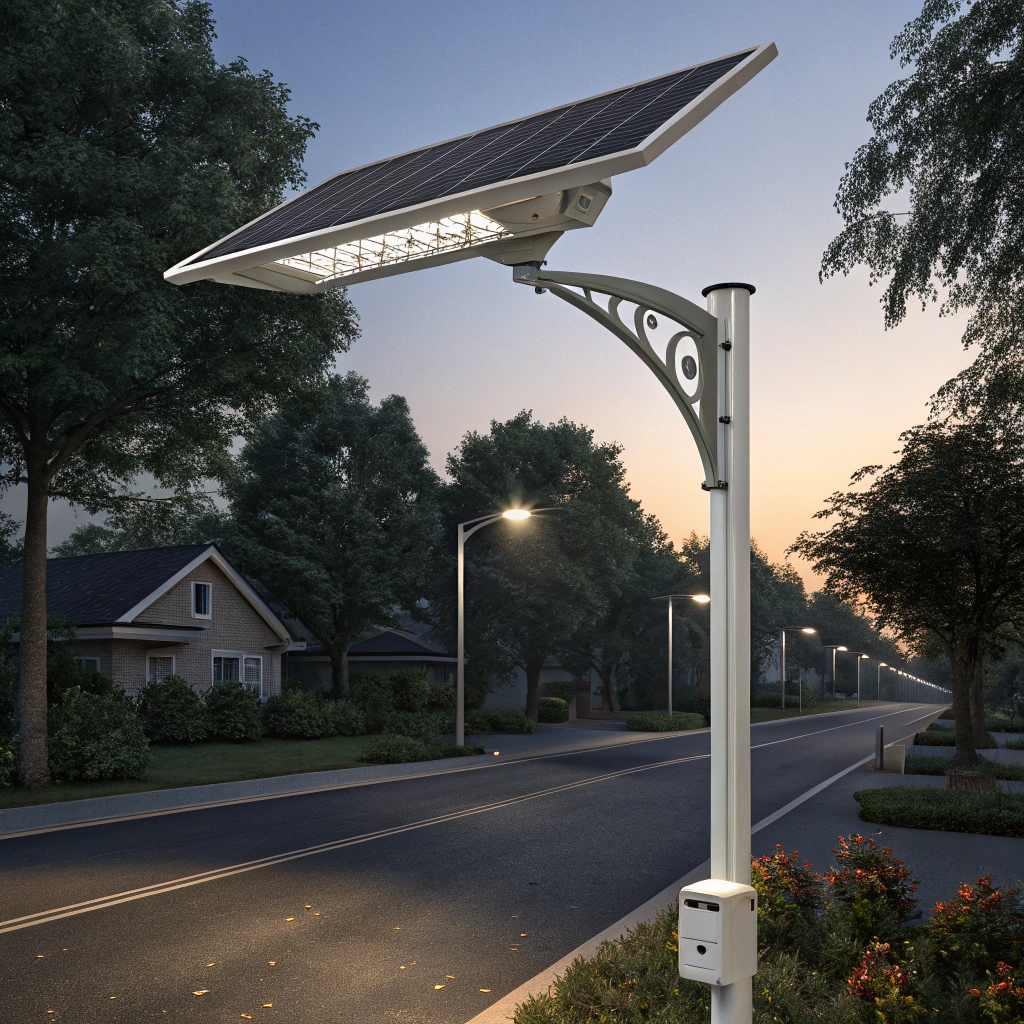Technological Upgrades Drive Solar Street Lights Toward Intelligence?
•
Technological Upgrades Drive Solar Street Lights Toward Intelligence?
Struggling with inefficient street lighting? Solar street lights are getting smarter, cutting costs and energy waste while boosting reliability.
Modern solar street lights leverage intelligent control systems, advanced batteries, and IoT integration to optimize energy use, extend lifespan, and seamlessly connect to smart city grids.

The shift from traditional to intelligent solar lighting isn’t just a trend—it’s a revolution. Let’s explore how these upgrades are transforming urban landscapes.
Intelligent Control Systems[^1]: Application of Automatic Dimming and Remote Monitoring?
Tired of lights that stay blindingly bright at 3 AM? Intelligent controls adapt brightness to real-time needs, slashing energy bills.
Automatic dimming[^2] adjusts light output based on motion and ambient conditions, while remote monitoring enables real-time troubleshooting and data-driven maintenance.
Dive Deeper: How Smart Controls Work
-
Motion Sensors
- Detect pedestrian/vehicle movement, triggering brightness boosts.
- Example: Lights dim to 30% at midnight but surge to 100% when activity is sensed.
-
Ambient Light Detection
- Syncs with natural light levels to avoid over-illumination.
-
Remote Management Platforms Feature Benefit Fault alerts Instant notifications for outages Usage analytics Track energy savings over time
Case Study: A pilot in Barcelona reduced energy use by 62% with adaptive controls (Smart Cities Council, 2023).
New Battery and Light Source Technologies: Enhancing Lighting Efficiency and Lifespan?
Frustrated by lights dying mid-winter? Next-gen batteries and LEDs ensure year-round reliability.
Lithium-ion batteries[^3] and high-efficiency LEDs now offer 50,000+ hours of operation, with solar panels achieving 25% conversion rates—double older models.
Breakthroughs Explained
-
Batteries:
- Lithium Titanate: Charges at -30°C, ideal for cold climates.
- Graphene Hybrids[^4]: 3x faster charging, 5x longer cycles.
-
Light Sources:
- COB (Chip-on-Board) LEDs[^5] provide uniform illumination with 200 lm/W efficiency.
| Data Snapshot: | Technology | Improvement vs. Traditional |
|---|---|---|
| Li-ion Batteries | 80% less capacity loss/year | |
| PERC Solar Cells | 22-25% efficiency |
IoT Empowerment[^6]: Integrating Solar Street Lights into Smart Cities?
What if streetlights could talk? IoT turns them into data hubs for smarter urban planning.
Connected lights feed traffic, air quality, and security data to central dashboards, enabling dynamic city management.
IoT Integration Layers
- Data Collection
- Sensors monitor foot traffic, pollution, noise levels.
- Network Protocols
- LoRaWAN for long-range, low-power communication.
- AI Analytics
- Predict maintenance needs before failures occur.
Example: Copenhagen’s IoT-linked lights reduced CO₂ by 1,400 tons annually (Nordic IoT Report, 2024).
Conclusion
Intelligent solar street lights—merging efficiency, durability, and connectivity—are redefining sustainable urban lighting.
[^1]: Explore how intelligent control systems enhance energy efficiency and reduce costs in solar street lighting.
[^2]: Find out how automatic dimming technology optimizes energy use and enhances street lighting efficiency.
[^3]: Learn about the advantages of lithium-ion batteries in ensuring reliable and efficient solar street lighting.




